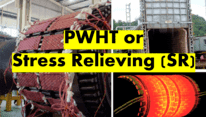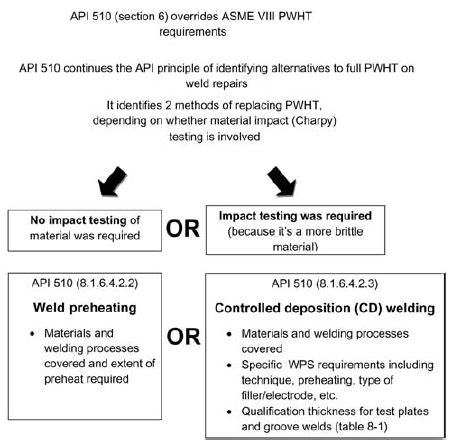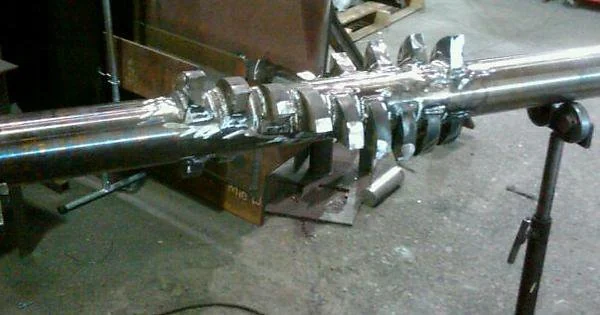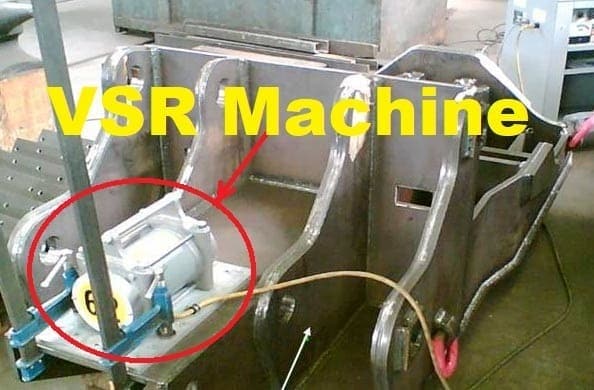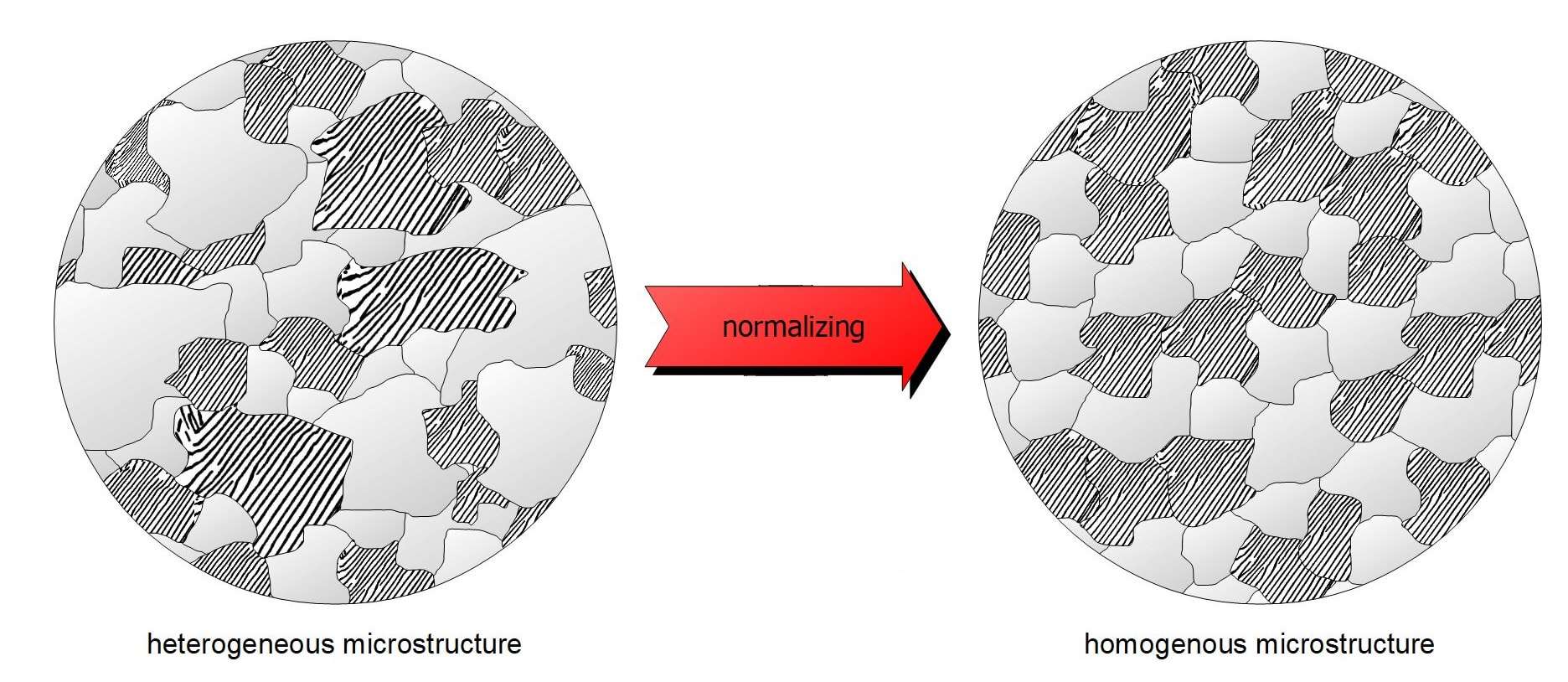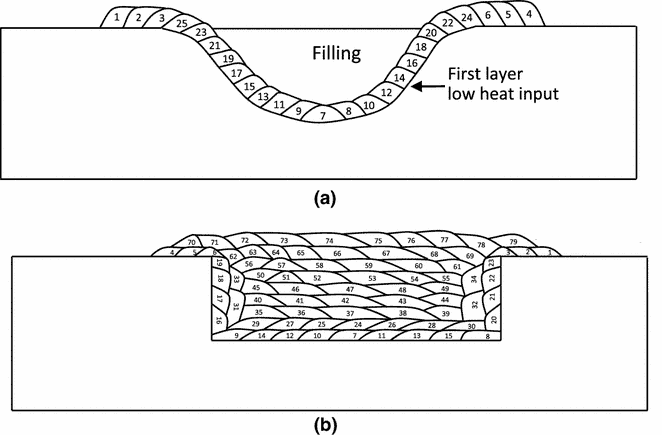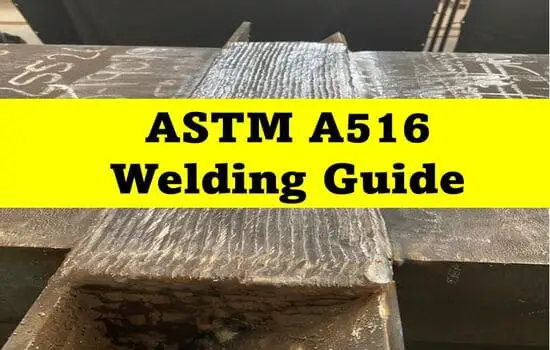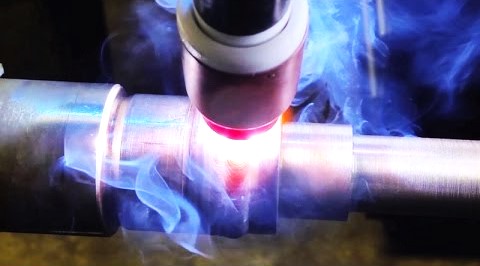What is Post Weld Heat Treatment (PWHT) or Stress Relieving?
Post Weld Heat Treatment (PWHT), or also called stress relief (SR) is a method for reducing- relieving, and redistributing the residual stresses in the material that have been introduced by welding.
Post weld heat treatment is a controlled heat treatment method in that welded components (welded material) are reheated in a furnace or localized heating arrangement to a temperature that is lower than it’s critical transformation temperature (known as AC1).
This is followed by keeping the part at this pre-determined temperature for certain time duration known as Holding Time.
This is followed by slow & controlled cooling in the furnace to allow uniform-controlled expansion & contraction.
Why Post Weld Heat Treatment or PWHT is required?
Residual stresses in welded joints are caused or generated as a result of the heating and cooling down of the weldments.
During welding, the area in the welded part reaches a temperature above its melting point within a very limited region, but the temperature drops rapidly as the welding torch moves farther.
This results in rapid dissipation of heat and an insignificant volume of heated metal to allow a uniform temperature gradient.
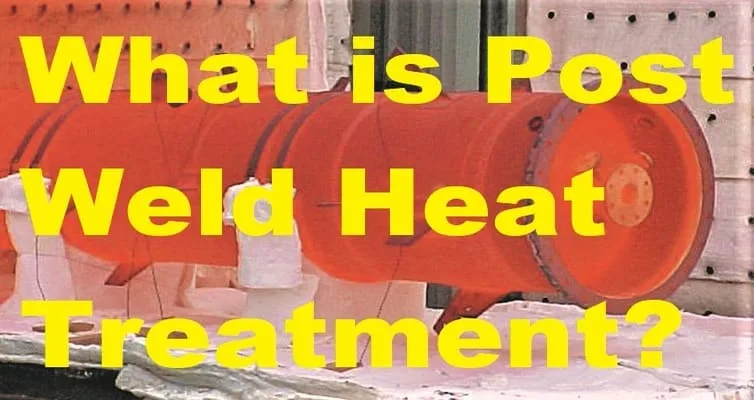
These conditions prevent the uniform expansion of the metal due to restraint caused by adjacent base metal and will produce internal stresses (residual stresses), distortion, and warping.
These residual stresses if not removed can possibly add to the stresses from the service conditions of the part and can cause failure during run.
Further to above, certain industries such as oil & gas, chemical, and petrochemical have associated failure mechanisms such as stress corrosion cracking, Hydrogen sulfide cracking, and fatigue failures that require mandatory removal of residual stresses by heat treatment before the part is put in service such as wet H2S, amine, caustic and carbonates services.
Effect of Post Weld Heat Treatment or PWHT on material
Tempering effect of the PWHT
PWHT is performed below the recrystallization temperature of the steel at varied temperature ranges. The temperature is lower for carbon steel material and increases for low alloy steel.
This temperature will not generate any microstructural changes in the material structure as the material does not go through any phase transformation.
Although, it reduces the locked-in stresses and brings a tempering effect on the material by reducing the hardness.
This is more effective for low alloy steel having primary microstructure as bainite and martensite.
PWHT Effect on Mechanical Properties
Generally, the following are the effects of post-weld heat treatment compared with the as-welded condition in an alloy:
- PWHT reduces the material stresses and hence decreases the yield strength.
- The effect on Tensile strength is not very high. There can be slight decreases in the tensile strength.
- Due to reduced residual stresses, the material ductility improves.
- PWHT decreases the weld & HAZ hardness by reducing the locked-in stresses.
- Due to improved ductility and tempering effects on the material, the toughness of the material is increased, although not at a pronounced level.
- PWHT improves the corrosion resistance and service-related cracking resistance of the materials.
PWHT Effect on Creep Properties
Most of the creep resistance materials are either Cr-Mo steel or Nickel base alloys with added niobium or alloyed with Molybdenum and tungsten.
Post weld heat treatment on Cr-Mo steel is carried out at higher temperatures.
For example, low alloy steel of 1.25Cr-0.5Mo PWHT at 1275°F to 1325°F is carried out for maximum tempering (creep) effect on the weldment while for general application, the temperature range is 1225°F to 1275°F.
Austenitic-based creep alloys such as SS347 are usually given thermal stabilization treatment after welding to give optimum creep properties to the material.
Benefits of Post Weld Heat Treatment or Stress-Relieving (SR)
Post weld heat treatment of PWHT is the best method to relieve the residual stresses and to anneal the weldment and heat-affected zone.
Stress relief annealing is also a mandatory requirement for many service conditions irrespective of the material type and thickness.
Some examples of such service environments are H2S, amine service, caustic service, and mandatory code requirements in some cases.
In general, Post weld heat treatment (PWHT) or stress-relieving (SR) have the following benefits on the material:
- Reduce the weld & HAZ hardness.
- Enhance the corrosion resistance of the materials for critical services such as HIC issues in a wet H2S environment or stress corrosion cracking.
- PWHT improves material ductility.
- Reduces the residual stresses and hence improves the service life.
- Improve weld & HAZ toughness.
- Soften the HAZ hardened zones.
- Meets mandatory code requirements.
- Provide creep properties enhancement for the materials.
Difference Between Post-heating & Stress Reliving
What is Post Heating
Post heating in welding refers to the heating of the weldment after weld completion to allow diffusion of hydrogen by keeping the welding area temperature high enough for hydrogen to escape.
Another purpose of performing post-heating is to allow the release of residual stresses as sometimes it is not feasible to perform full PWHT or stress relieving of the part. In such cases, post-heating is an effective alternative.
- When post-heating is specified, it starts immediately after completion of the weld, so the weld is not allowed to cool.
- A defined post-heating temperature is followed and throughout this time range, post-heating is allowed.
- Usually, after post-heating welding is covered with kawol to allow slow cooling which provides tempering effects to the welding and HAZ area.
What is Stress Relieving
Stress-relieving or SR or PWHT is sometimes confused with post-heating after welding.
While this is totally different. In SR, a part is heated in a furnace or sometimes locally but always at a controlled heating rate, holding at a defined temperature for a specific period and then controlled slow cooling of the part in the furnace to effectively reduce the residual stresses generated due to the welding.
Stress relieving is carried out at a much higher temperature than post-heating.
How to perform Post Weld heat Treatment (PWHT)
How to perform Post Weld heat Treatment (PWHT) is performed based on the material type, thickness, and applicable construction code requirements.
These codes are the primary data to lay down the PWHT temperature, heating and cooling rates, and holding time for PWHT.
Examples of construction codes for example are- ASME B31.3 for process piping, ASME Section VIII for pressure vessels, and AWS D1.1 for structural welding for steels.
These codes give detailed requirements for PWHT or SR requirements for various materials and their associated conditions such as heating & cooling rate, and PWHT exemption in certain cases.
Heating & Cooling Rates in PWHT
Post weld heat treatment (PWHT) or SR heating & cooling rates are given in the construction code such as ASME Section VIII Div 1 or ASME B31.3 or AWS D1.1.
For pressure vessels fabricated according to ASME Section VIII Div 1, the heating & cooling rates are given in clause UCS 56 as ‘above 800°F (425°C), the heating rate shall be maximum 400°F/hr (222°C/h) divided by the maximum material thickness (in inches) of the shell or head plate, but the maximum limit is 400°F/hr (222°C/h).
The same heating & cooling rate limit is as per ASME section Ⅲ NX-4623.
Similar Posts:
